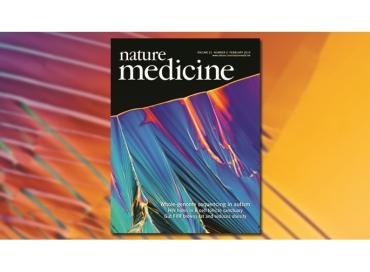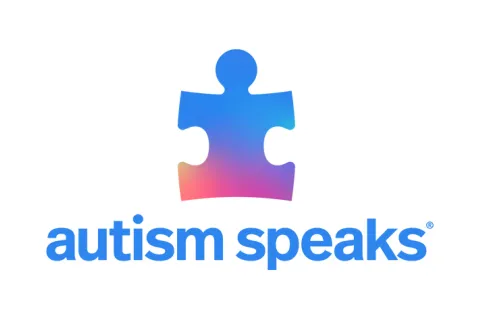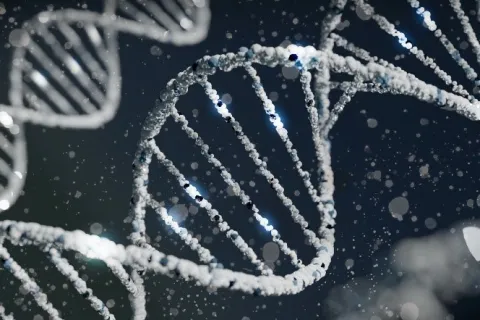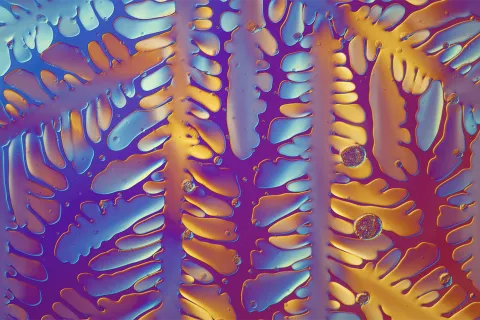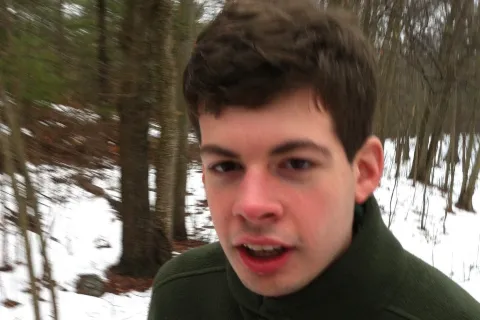Largest-ever autism genome study finds most affected siblings have different autism-risk genes
Surprising finding makes cover of Nature Medicine; study data becomes part of historic first upload to Autism Speaks MSSNG portal for open-access research
December 7, 2015The crystallized DNA on the cover of this week's Nature Medicine is the iconic image of the Autism Speaks MSSNG project, with its aim of uncovering the unique beauty spelled out in the genome of every person with autism.
The largest-ever autism genome study reveals that the disorder’s genetic underpinnings are even more complex than previously thought: Most siblings who have autism spectrum disorder (ASD) have different autism-linked genes.
Led by the director of the Autism Speaks MSSNG project (pronounced “missing”), the report made the cover of today’s Nature Medicine.
Simultaneous with publication, the study’s data became part of the historic first upload of approximately 1,000 autism genomes to the Autism Speaks MSSNG portal on the Google Cloud Platform. Autism Speaks will be making the de-identified data freely available for global research to speed understanding of autism and the development of individualized treatments. The goal of the project’s first phase is to upload 10,000 sequenced autism genomes, together with state-of-the-art, web-based analytic tools.
“This is a historic day,” says study leader Stephen Scherer, “as it marks the first time whole genome sequences for autism will be available for research on the MSSNG open-science database. This is an exemplar for a future when open-access genomics will lead to personalized treatments for many developmental and medical disorders.” In addition to leading Autism Speaks’ MSSNG program, Dr. Scherer directs the Centre for Applied Genomics at Toronto’s Hospital for Sick Children and the McLaughlin Centre at the University of Toronto.
“By using the cloud to make data like this openly available to researchers around the world, we’re literally breaking down barriers in a way never done before,” says Autism Speaks Chief Science Officer Robert Ring. “As always, our goal at Autism Speaks is to accelerate scientific discovery that will ultimately improve the lives of individuals with autism at home and around the world.” Dr. Ring is among the co-authors of today’s Nature Medicine report.
In its first phase, the MSSNG project aims to make at least 10,000 sequenced autism genomes available for research, along with a "tool box" of state-of-the-art instruments to aide analysis.
Autism’s surprising diversity
In the new study, the researchers sequenced 340 whole genomes from 85 families, each with two children affected by autism. They found that the majority of siblings (69 percent) had little to no overlap in the gene variations known to contribute to autism. Less than a third (31 percent) of the sibling pairs shared the same autism-associated genes.
The findings challenge long-held presumptions. Because autism often runs in families, experts had assumed that siblings with the disorder were inheriting the same autism-predisposing genes from their parents. It now appears this may not be true in most cases.
“We knew that there were many differences in autism, but our recent findings firmly nail that down,” Dr. Scherer says. “We believe that each child with autism is like a snowflake – unique from the other.”
“This means we should not be looking just for suspected autism-risk genes, as is typically done in diagnostic genetic testing,” Dr. Scherer adds. “A full assessment of each individual’s genome is needed to determine how to best use knowledge of genetic factors in personalized autism treatment.” Whole genome sequencing goes far beyond traditional genetic testing to analyze an individual’s complete DNA sequence.
Known autism-risk genes showed up in 42 percent of the families participating in the study. “This may help explain why autism came about in their child or provide insight into related medical conditions,” Dr. Scherer says. For example, genome sequencing found an autism-risk gene with a strong link to epilepsy in one of the study participants. Her brother, who also had autism, had a completely different risk gene – one related to Angelman's syndrome.
In a 2013 pilot genome sequencing study, Dr. Scherer’s team identified autism-linked genes in more than half of 32 participating families. That study provided several families with medically important information.
Other leading authors of the new study include Ryan Yuen, whose work grew out of his Autism Speaks Meixner Postdoctoral Fellowship in Translational Research.
In addition to Autism Speaks and Autism Speaks Canada, study funders included KRG Children's Charitable Foundation, The Catherine and Maxwell Meighen Foundation, NeuroDevNet, Canadian Institutes for Advanced Research, the University of Toronto McLaughlin Centre, Genome Canada, Ontario Genomics Institute, Ontario Brain Institute, the Government of Ontario, Canadian Institutes of Health Research and SickKids Foundation.

